Magic paper
Write, conceal, and reveal!
Reagents
Safety
- Put on protective gloves and eyewear.
- Conduct the experiment on the plastic tray.
- Do not allow chemicals to come into contact with the eyes or mouth.
- Keep young children, animals and those not wearing eye protection away from the experimental area.
- Store this experimental set out of reach of children under 12 years of age.
- Clean all equipment after use.
- Make sure that all containers are fully closed and properly stored after use.
- Ensure that all empty containers are disposed of properly.
- Do not use any equipment which has not been supplied with the set or recommended in the instructions for use.
- Do not replace foodstuffs in original container. Dispose of immediately.
- In case of eye contact: Wash out eye with plenty of water, holding eye open if necessary. Seek immediate medical advice.
- If swallowed: Wash out mouth with water, drink some fresh water. Do not induce vomiting. Seek immediate medical advice.
- In case of inhalation: Remove person to fresh air.
- In case of skin contact and burns: Wash affected area with plenty of water for at least 10 minutes.
- In case of doubt, seek medical advice without delay. Take the chemical and its container with you.
- In case of injury always seek medical advice.
- The incorrect use of chemicals can cause injury and damage to health. Only carry out those experiments which are listed in the instructions.
- This experimental set is for use only by children over 12 years.
- Because children’s abilities vary so much, even within age groups, supervising adults should exercise discretion as to which experiments are suitable and safe for them. The instructions should enable supervisors to assess any experiment to establish its suitability for a particular child.
- The supervising adult should discuss the warnings and safety information with the child or children before commencing the experiments. Particular attention should be paid to the safe handling of acids, alkalis and flammable liquids.
- The area surrounding the experiment should be kept clear of any obstructions and away from the storage of food. It should be well lit and ventilated and close to a water supply. A solid table with a heat resistant top should be provided
- Substances in non-reclosable packaging should be used up (completely) during the course of one experiment, i.e. after opening the package.
FAQ and troubleshooting
First, use your absorbent with potassium iodide KI solution to apply more KI solution to your still-invisible inscription. If this doesn’t work, use your “pen” with copper sulfate CuSO4 solution to recreate your message or drawing.
If your secret inscription doesn’t reappear at the very end of the experiment, apply some more potassium hexacyanoferrate K3[Fe(CN)6] solution to the absorbent and reapply it to the paper.
If this doesn’t work, try repeating the experiment, applying a few more drops of the reagent to the small cotton cylinder each time.
There is enough paper in the set to repeat the experiment several times. If you really want to use ordinary paper, you can certainly try! Document any differences in your outcomes, and let us know the results of your observations!
Note that the set contains similar items that differ in size. Make sure that you use the smaller cotton cylinder (not a bulky absorbent) and the thicker wooden stick to make your brush.
If for some reason they still don’t fit, don’t worry! Just drip 5 drops of copper sulfate CuSO4 solution on the cotton absorbent and continue the experiment using it.
Step-by-step instructions
Apply some potassium iodide KI to a sheet of paper.
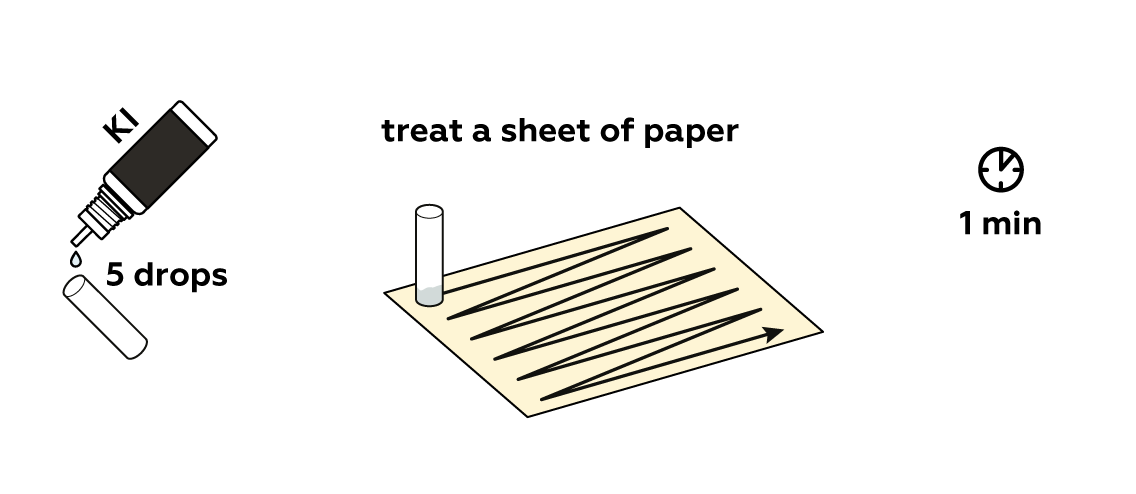
Apply some copper sulfate CuSO4 solution to a "brush."
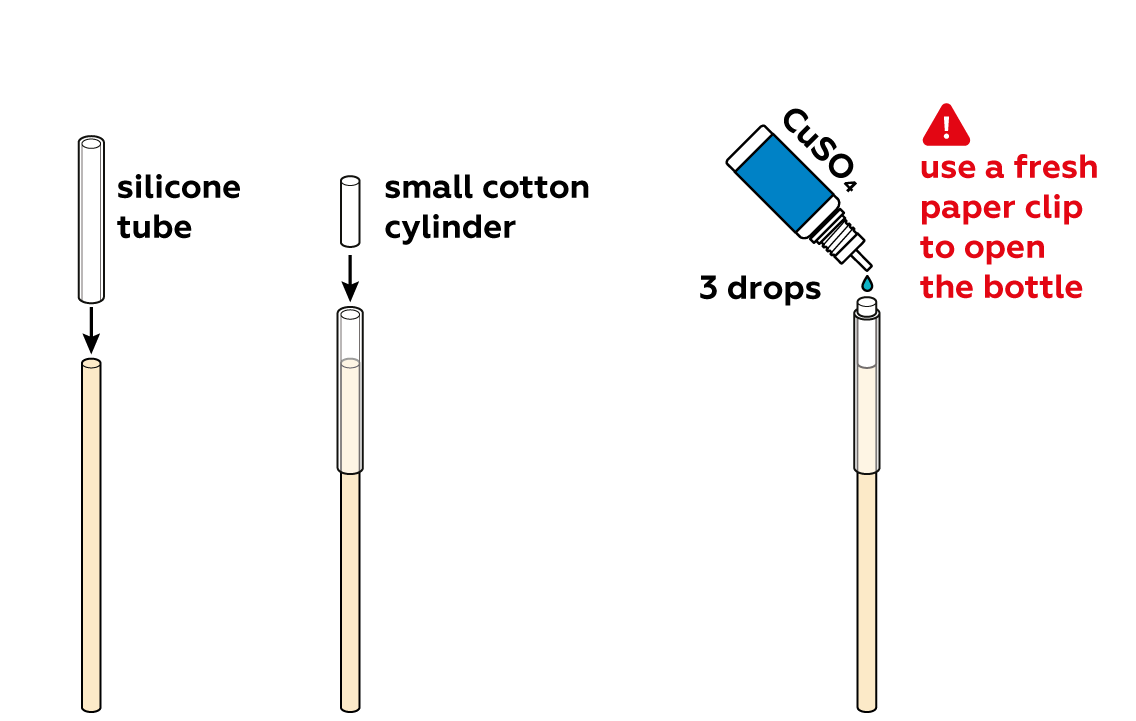
The Cu2+ from CuSO4 can turn the colorless I- from KI into the much darker I2. Watch as this reaction occurs before your very eyes, and your picture gradually darkens!
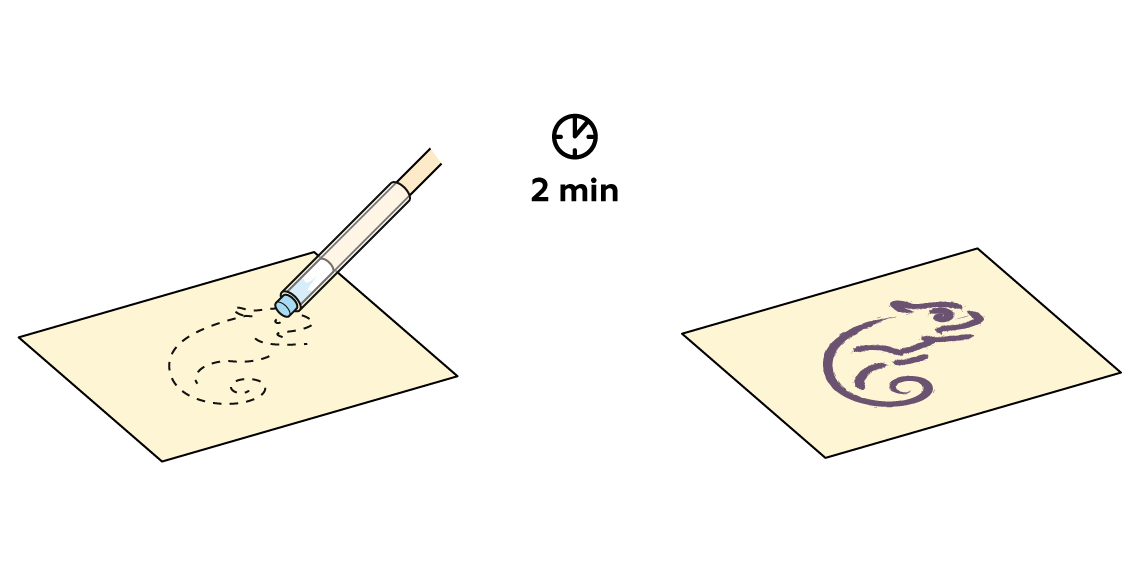
It's easy to turn I2 back into I-. Just apply some Na2S2O3 and watch your picture disappear.
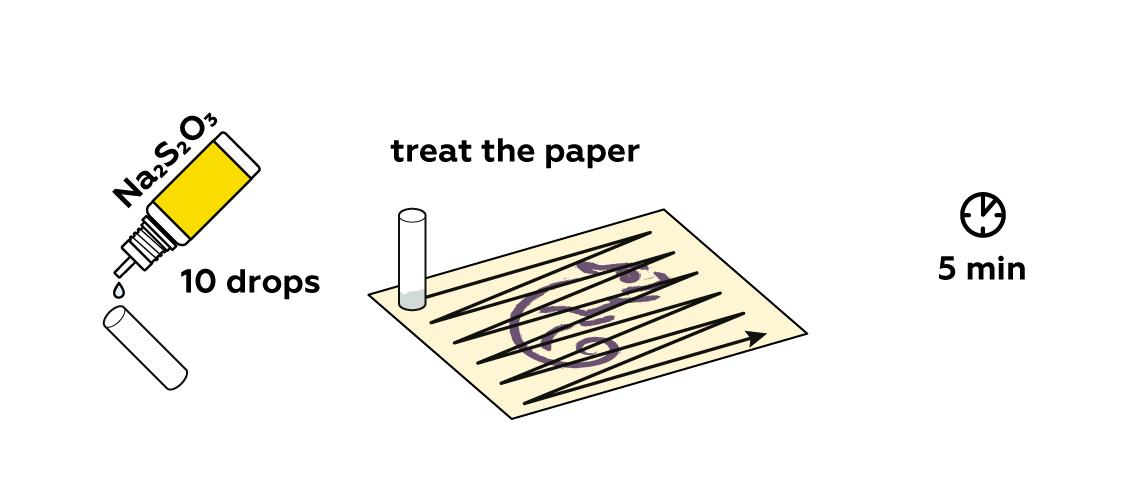
Did the picture vanish completely? Not really. Some Cu2+ is still left on the paper, and you can develop it using yet another chemical—K3[Fe(CN)6]. [Fe(CN)6]3- combines with Cu2+ to form a dark brown compound, allowing you to see your masterpiece once again.
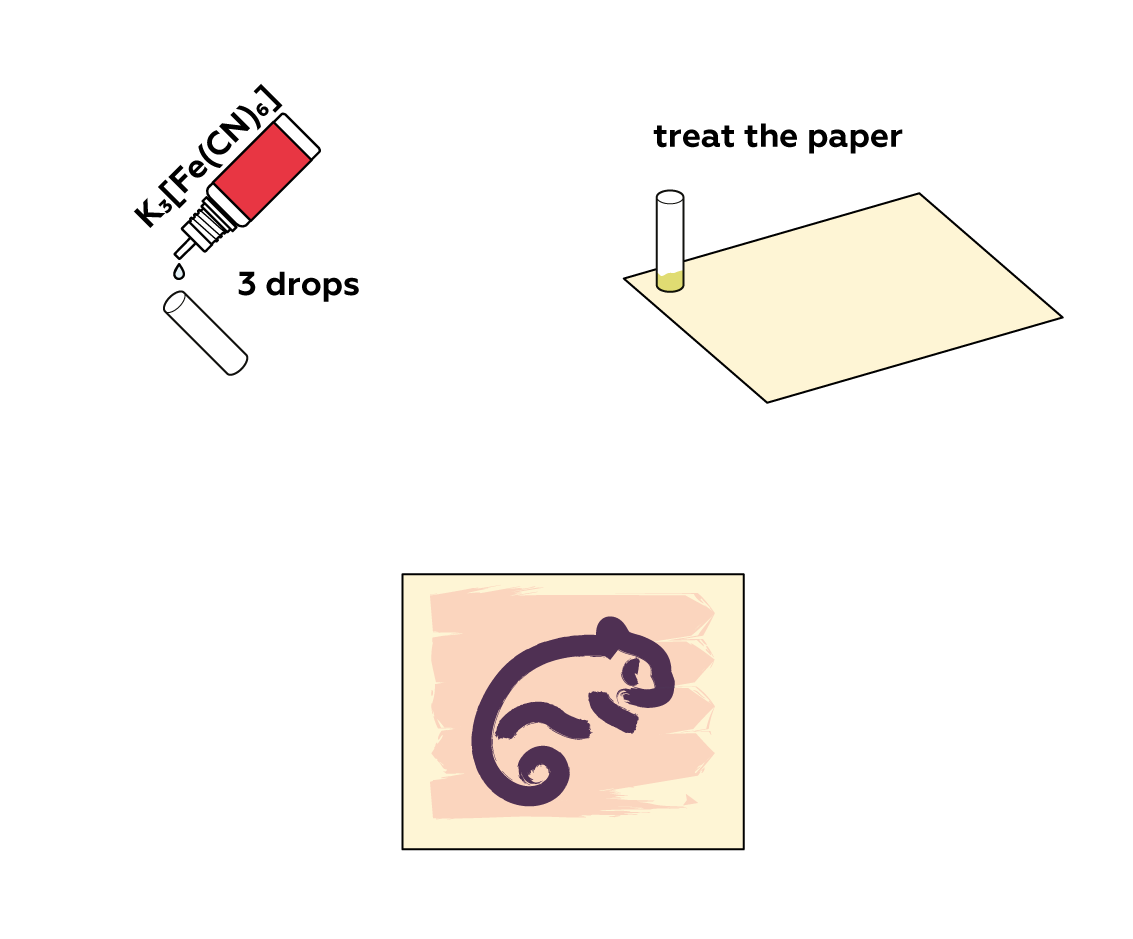
Disposal
Dispose of the reagents and solid waste together with household garbage. Pour solutions down the sink and wash with an excess of water.
Scientific description
How is the message revealed?
The copper(II) sulfate CuSO4 from the marker reacts with potassium iodide KI, producing copper(I) iodide CuI and iodine I2:
2CuSO4 + 4KI → 2CuI + 2K2SO4 + I2
This is an oxidation-reduction reaction – the copper ion from CuSO4 takes an electron from the iodide ion in KI:
Cu+2 + e → Cu+1
I−1 - e → I0
The copper ion Cu+2 is an oxidizer, while the iodide ion I−1 is a reducing agent. After the electron transfer, they form copper(I) and iodine (0), respectively. Two of the latter can combine to form a molecule of iodine I2. Iodine is quite vividly colored, so the message becomes brownish-purple and, as a result, visible.
Why does the inscription disappear?
We start with colorful iodine I2. To make it fade, we need yet another oxidation-reduction reaction. Free iodine I2 is a weak oxidizer, and sodium thiosulfate Na2S2O3 can act as a reducing agent. The result is a reaction:
2Na2S2O3 + I2 → 2Na2S4O6 + 2NaI
I02 + 2e → 2I−1
2S2O3−2 - 2e → S4O6−2
Each thiosulfate ion taking part in the reaction gives its electrons to iodine. As a result, iodine is reduced back to iodide ions I−1, and the brown color disappears.
Why does the inscription reappear?
Oxidation-reduction reactions aren’t the only ones that can change the color of a solution. There also exist chemical reactions in which the reacting substances exchange their constituent parts – so-called ion exchange reactions.
When potassium ferricyanide is applied to the paper with the secret message, it reacts with the copper ions Cu+2 in the marker “ink” to yield copper ferricyanide Cu3[Fe(CN)6], which precipitates, coloring the paper reddish-brown.